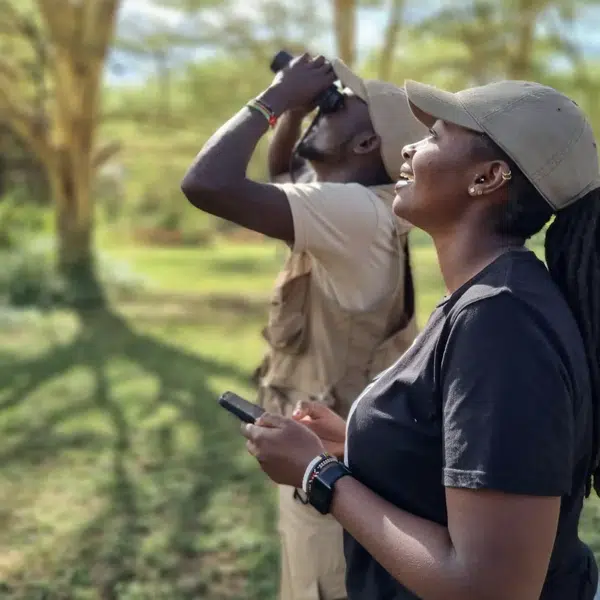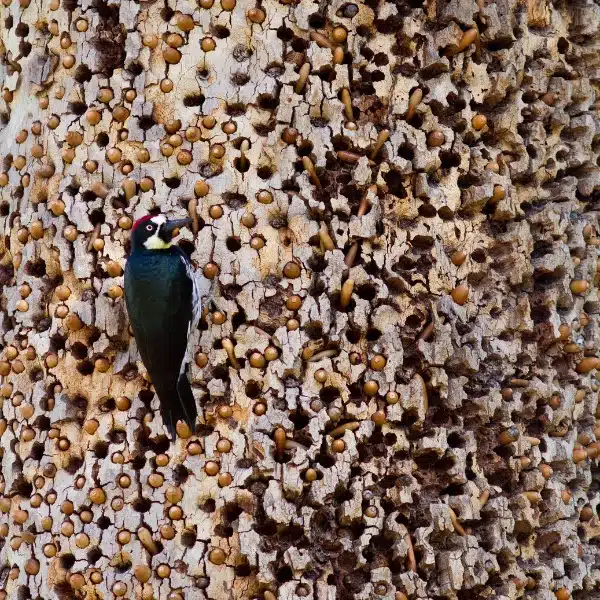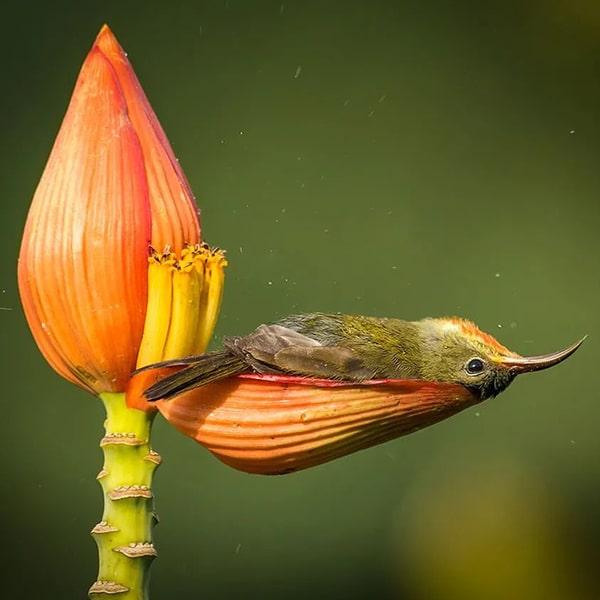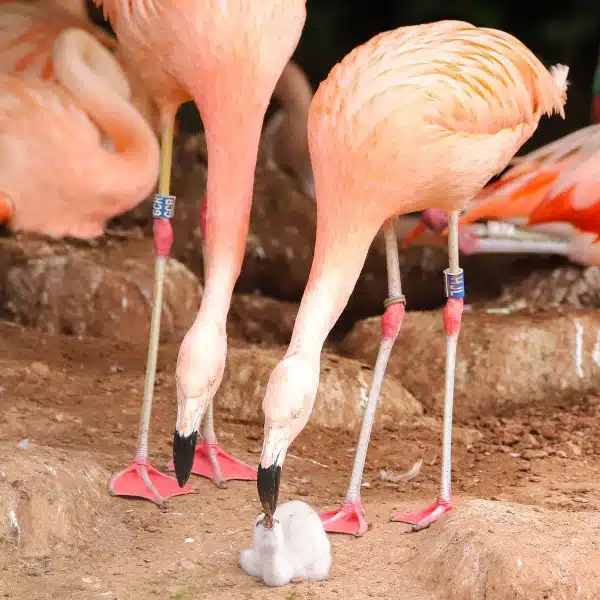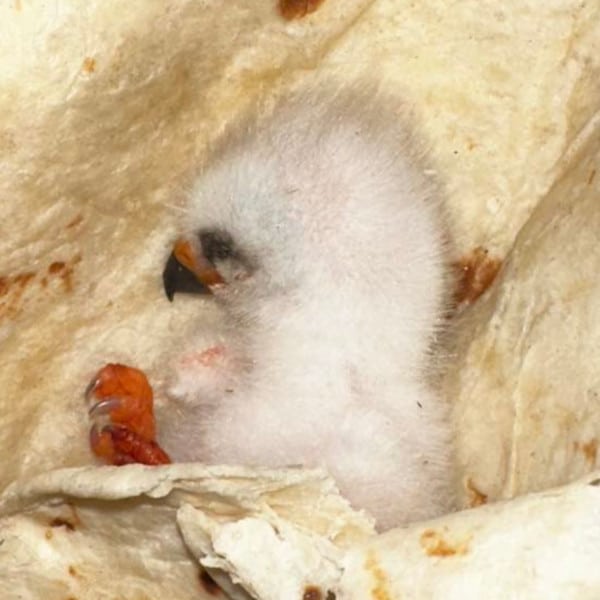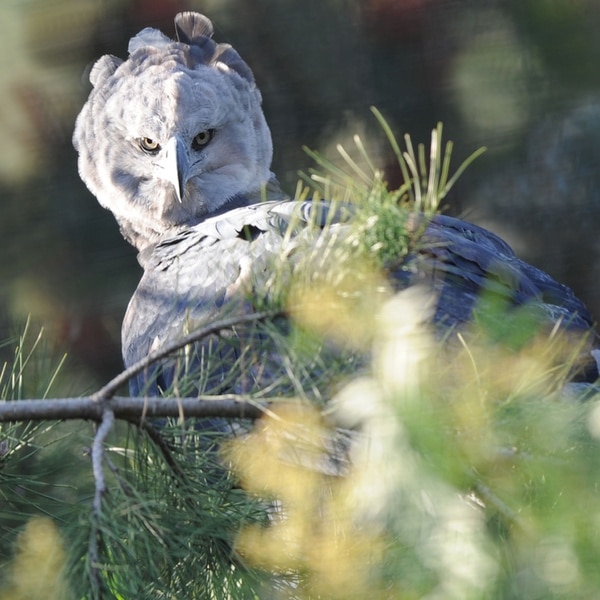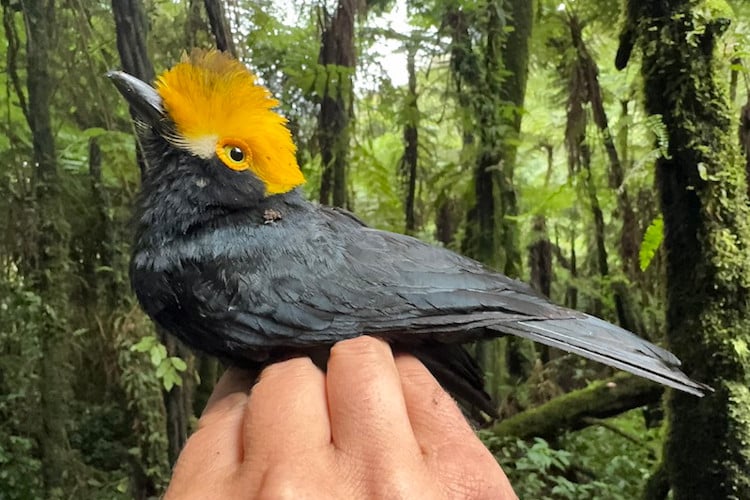
Photo: Matt Brady / The University of Texas at El Paso (CC BY-NC 2.0)
Being a scientist means venturing into the unknown, even if there is no certainty you'll find what you're looking for. For researchers from the University of Texas at El Paso (UTEP), this meant roaming the jungles of the Democratic Republic of the Congo to find a bird long thought lost. Luckily, their efforts bore fruit, giving us the first ever images of the striking yellow-crested helmetshrike (Prionops alberti).
“It was a mind-blowing experience to come across these birds. We knew they might be possible here, but I was not prepared for how spectacular and unique they would appear in life,” said expedition co-leader Michael Harvey, Ph.D. in a statement shared by UTEP.
The scientists made the discovery during a six-week expedition to the Itombwe Massif, a mountain range in eastern Democratic Republic of the Congo. Trekking by foot for over 75 miles, they studied birds, amphibians and reptiles along the way. Harvey was joined by Professor of Biological Sciences Eli Greenbaum, Ph.D, and ornithologist Matt Brady, as well as a group of Congolese researchers from the Centre de Recherche en Sciences Naturelles.
Finally, while exploring the cloud forests on the slopes of a mountain, Harvey and Brady stumbled upon the helmetshrike. The eye catching black bird with a bright yellow “helmet” was described by team as rather “noisy and active groups in the midstory of the forest.” In total, they spotted 18 of these birds in three sites during the expedition.
“This inspires hope that perhaps the species still has a reasonably healthy population in the remote forests of the region,” Harvey said. Before their sighting, the yellow-crested helmetshrike had not been seen in nearly 20 years, sparking fears that the species may have gone extinct.
While war and internal turnmoil had made explorations to the area difficult, the area is now safer to visit. For now, the next challenge is to protect their environment. “Mining and logging as well as the clearing of forests for agriculture are making inroads deep into the forests of the Itombwe range,” Harvey added. “We are in discussions with other researchers and conservation organizations to further efforts to protect the region’s forests and the helmetshrike. Right now is a golden opportunity to protect these tropical forests, so that we don’t lose species like the helmetshrike before they are known and studied.”
h/t: [IFL Science]
Related Articles:
Watch Two Scientists React to Getting the First Ever Footage of an Extremely Rare Bird
Bird Landing on Bride’s Head Wins 2023 International Wedding Photographer of the Year Contest
Beautiful 19th-Century Illustrations of Every Known Hummingbird Species in One Dynamic Poster
Woman Uses Hidden Cameras To Get Candid Look at Birds in Her Backyard











































































